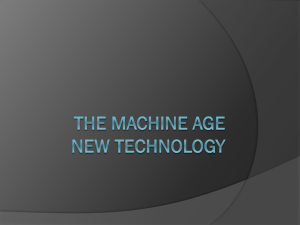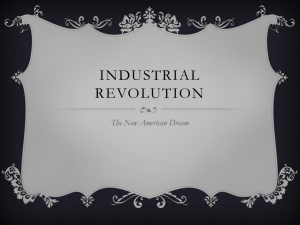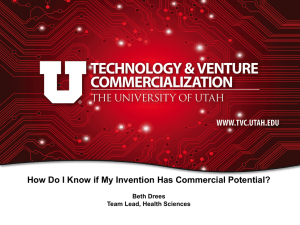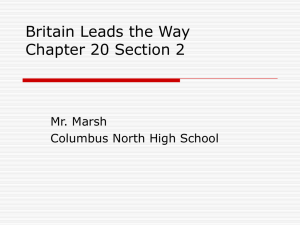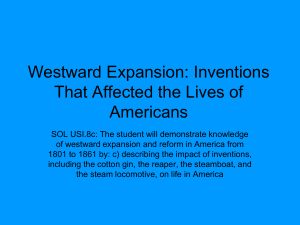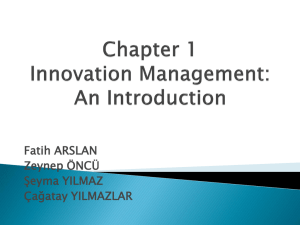Universities - IP Conference 2014
advertisement
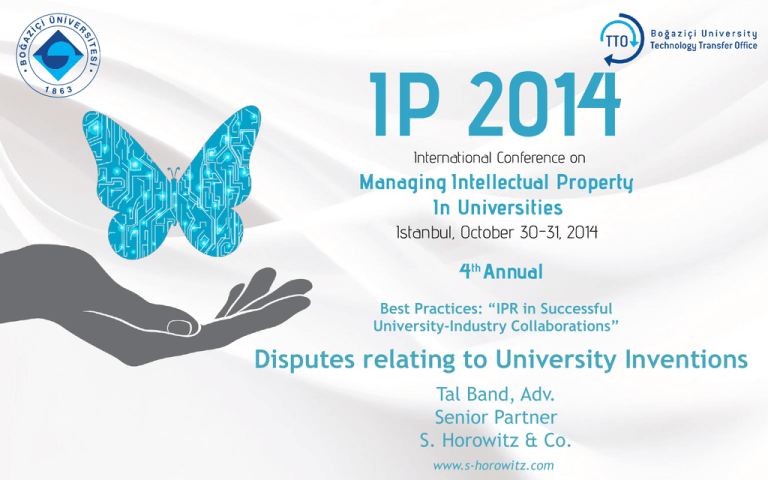
Best Practices: “IPR in Successful University-Industry Collaborations” Disputes relating to University Inventions Tal Band, Adv. Senior Partner S. Horowitz & Co. www.s-horowitz.com Potential disputes relating to University inventions: Amongst researchers Typical issues: • Who should be considered the/an inventor. • Each inventor’s relative contribution to arriving at the invention University/TTO - researchers Typical Issues: • Unlawful transfer of “Service Inventions” by researcher to industry • Is the invention a “Service Invention” ? • University’s decision in disputes between researchers Possible implication: Disputes between University/TTO and Industry 1 © Tal Band, Adv. 2014 Patent Regulations of Israeli Universities Common Principles: Broad definition of “Service Invention” – • Both patentable and unpatentable; discoveries; other works. • Arrived at by university employees or students/others using university resources Ownership – vests exclusively in the university Reporting and Disclosure – absolute/qualified Confidentiality – publication by inventors is subject to prior notice/approval Dispute Resolution Mechanism – • “Service Invention”, inventorship, relative contribution Decision Making Mechanism – whether/where to seek patent protection Revenue Sharing – 50-60% University, 50-40% Inventor(s) 2 © Tal Band, Adv. 2014 Patent Regulations of Israeli Universities Potential Disputes and Possible Measures to Reduce Exposure: Who owns the invention – university? industry? • University-third party research collaborations • University researchers/students rendering services to Industry as employees/consultants How to reduce exposure? • Third parties must study the university’s Patent Regulations • Prior reporting of collaborations by university employees/students to university • Reach agreement in advance regarding ownership of inventions • Third parties should seek students’ undertaking not to use university resources when rendering services to them as employees/consultants 3 © Tal Band, Adv. 2014 Patent Regulations of Israeli Universities Potential Disputes and Possible Measures to Reduce Exposure: Qualified Duty of Reporting – • Inventor is exempt from reporting an invention to university (and from keeping it confidential), e.g., if he believes that it does not have commercial potential • Risk of commercially viable inventions leaking to industry • May lead to university-inventor, university-industry disputes How to reduce exposure ? • Preferably, universities should adopt an absolute duty of reporting 4 © Tal Band, Adv. 2014 Patent Regulations of Israeli Universities Potential Disputes and Possible Measures to Reduce Exposure: Revenue Sharing – • Generous revenue sharing provisions (inventors entitled to 40-50%) fuel disputes, for example: o Inventorship claims by students, laboratory staff o Disputes over each inventor’s relative contribution to the invention 5 © Tal Band, Adv. 2014 Patent Regulations of Israeli Universities How much money is involved? Official statistics for 2012-2013: • By 2013, Israeli universities had entered into 1159 licence agreements • 206 new licence agreements were entered into in 2012-2013 alone • 181 licence agreements generated royalties • Revenues from sales of IP and gross royalties in 2012 alone: NIS 1,853 million = US $490 million 6 © Tal Band, Adv. 2014 Examples of Actual Disputes Example No. 1 Prof. Afek invented a system for preventing internet servers from crashing under heavy loads resulting from “Distributed Denial of Service” (DDos) attacks. Prof. Afek did not report his inventions to TAU/Ramot. Shortly after going on unpaid leave, Prof. Afek founded Riverhead, which then filed patent applications in the U.S. The inventions were the company’s core asset. Cisco acquired Riverhead for US $40,000,000. TAU and Ramot filed a claim against Prof. Afek and Cisco. They sought (a) a declaratory relief from the court asserting their ownership in the inventions; and (b) recovery of the profits generated by Prof. Afek. Claim was settled: TAU/Ramot received a significant sum for their rights. 7 © Tal Band, Adv. 2014 Examples of Actual Disputes Example No. 2 Joint inventions of university professor and students relating to “Flash Memory” technology The professor and students rendered services to hi-tech company Both the university’s TTO and the hi-tech company shared the view that: • The professor arrived at the inventions in his capacity as university employee university’s “Service Inventions” • The students arrived at the inventions in their capacity as hi-tech company employees hi-tech company’s “Service Inventions” Inventions licensed by university’s TTO to hi-tech company for substantial consideration. Only the professor received 40%. 8 © Tal Band, Adv. 2014 Examples of Actual Disputes – Example No. 2 (Contd.) The students argued that they arrived at the inventions not in their capacity as company employees, but rather as students. Implications being: Students’ part in the inventions, similar to the professor’s part, amounts to a “Service Invention”, owned by the university and not by the hi-tech company Students entitled to receive from university’s TTO a portion of the 40% share from net revenues Resultant disputes: • Professor – students • University/TTO – hi-tech company • Hi-tech company – professor • Hi-tech company-students (?) Parties reached a settlement. 9 © Tal Band, Adv. 2014 Examples of Actual Disputes – Example No. 2 (Contd.) 10 © Tal Band, Adv. 2014 Recommendations How to reduce the exposure to disputes arising from research collaborations / R&D services rendered by university employees/students to industry ? Universities – • Apply strict policy regarding prior reporting and approval of collaborations with industry. Industry – • Check the university's Patent Regulations and know your risks. • Reach agreement with TTO in advance regarding ownership of inventions. • Have students sign an undertaking not to use any “university resources" when rendering services to you. • Have the research well recorded and documented. 11 © Tal Band, Adv. 2014 Recommendations How to reduce the exposure to disputes arising from the acquisition of rights in inventions directly from university employees/students ? Universities – • Adopt absolute obligation of employees/students to report inventions. Industry – • • • Be careful. Is the invention a university "Service Invention" under the relevant university's Patent Regulations? Carry out a proper due diligence. Look carefully into the history of the invention (where was the research carried out, who participated in the research and what did each participant contribute) Request formal confirmation from TTO that it does not claim any rights in the invention. 12 © Tal Band, Adv. 2014 Questions? Thank You ! Tal Band, Adv. 31 Ahad Haam St., Tel Aviv. Tel: (972)3 5670633, Fax: (972)3 5660974 Email: talb@s-horowitz.co.il 13 © Tal Band, Adv. 2014

